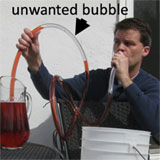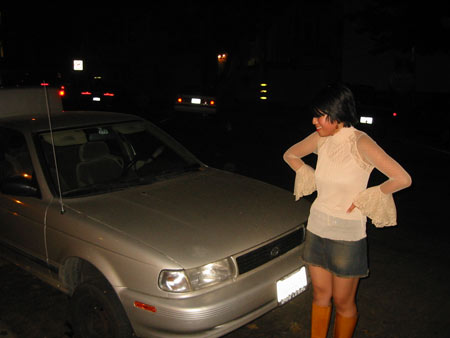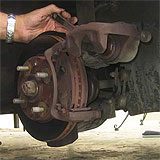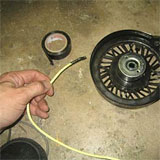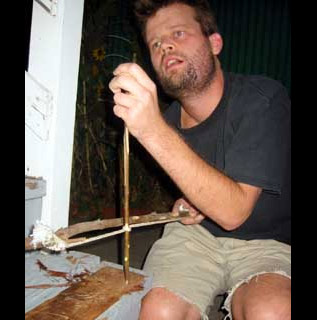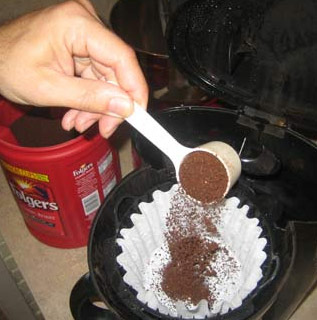Easy, Illustrated Instructions on How a Toilet Works
How does a toilet work? Let me explain it to you by inventing a history of toilet construction.

The job of a toilet is get human waste out of your house and to obscure the smell.
1. the Hole
The earliest type of toilet was a hole in the ground. This prevented others from stepping in your poop, and a covering of leaves or sand contained the smell.

2. The Indoor Hole
With the advent of concrete pipe and stonecutting, it was possible to poop into some kind of indoor bowl and to have water push it down a pipe and away. Water pipes that deliver fresh water hadn't yet been engineered, so users would bring in a pitcher of water to flush the contents of the bowl down the pipe. No one liked bringing in the water, and you had to check to see if someone had remembered to bring in a fresh pitcher of water before you took a dump. It was annoying.
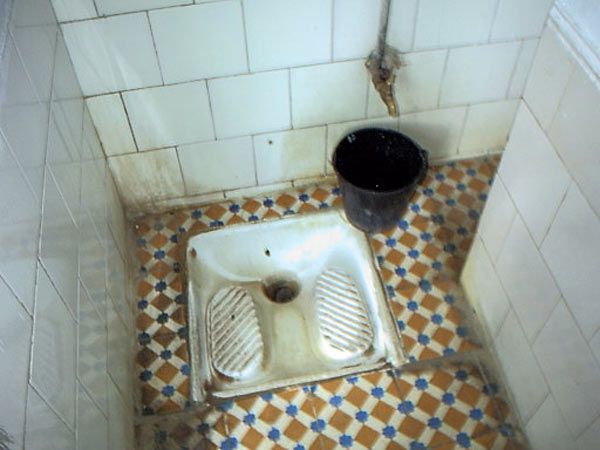
Above: Squat toilet in Tangier, Morrocco. Note the bucket for flushing. That upper-right corner looks like a photoshop mistake.
Below: Row of toilets from the ruins at Efes in Turkey. Water from a stream was routed to flow under these.
Can you help me find my car keys?
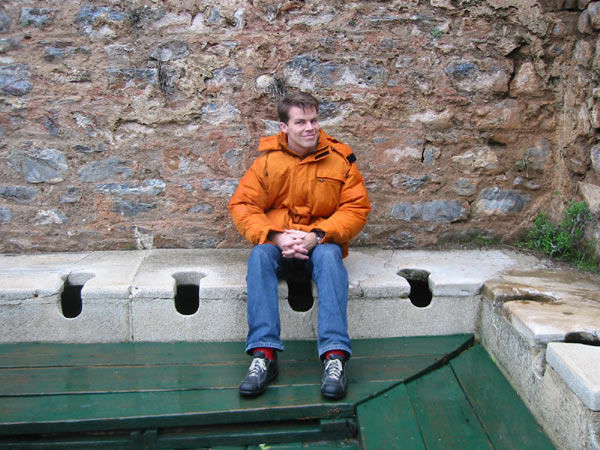
Without an under-toilet stream, the poop would sometimes only travel about a foot down the exit pipe before it stopped, so even though you couldn't see it, you could smell it.
Luckily, someone invented a really good cover.
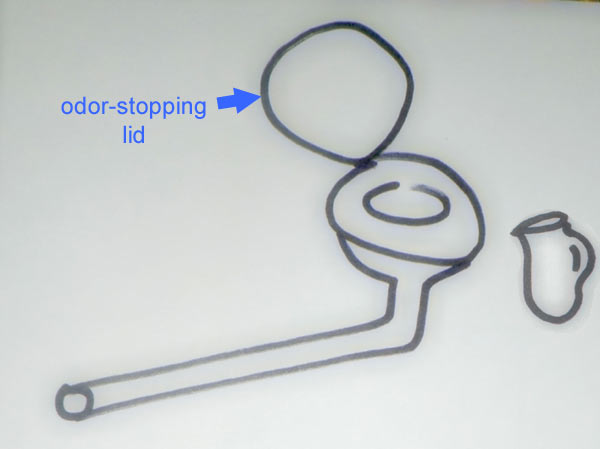
3. The Trap
Some genius realized that if the exit pipe had a little speed-bump in it, not all of the water could flow down the pipe.
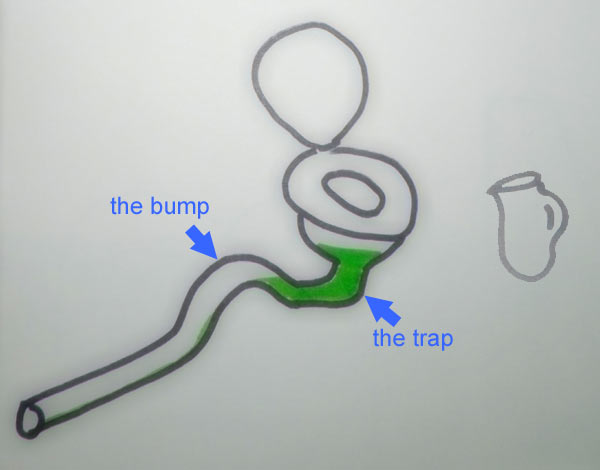
This is the trap. It isn't called a trap because it traps your fallen earring, it is called a trap because the water is trapped.
With this arrangement, a couple of quarts of water are always trapped in the pipe and in the bowl. The remaining water might be annoying to poop into, because it could splash, but that dammed-up water completely fills the pipe, and is incredibly awesome at sealing off the smell!
The trap is better than leaves! It's better than sawdust! It is better than odor-blocking activated charcoal-laced walnut shells. Water blocks odor.
Also, some of the gasses can actually be hazardous, such as methane.
Some experimentation revealed that whatever height the bottom of the speed bump was, that was the height of the water in the bowl. High bumps would keep a lot of water behind, but if the bump was too high, you'd have to really dump a ton of water into the bowl to clear it out.
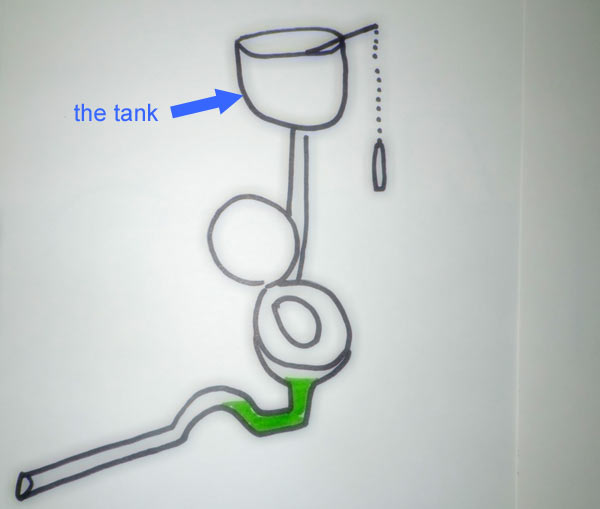
4. The Tank
Once indoor plumbing had mastered the art of containing water which was under high-pressure (40 psi), it was easy to have a water supply nearby to clear out the toilet bowl.
Rather than having a two-step process of turning on the water for two minutes and turning off the water, there is a tank which holds about five gallons, which sufficient for one regular flush. The tank dumps with the pull of a chain, or the press of a handle. The tank also allowed a huge flow of water to dump into the bowl at once, which could pretty much rinse away anything that a human body could expel.
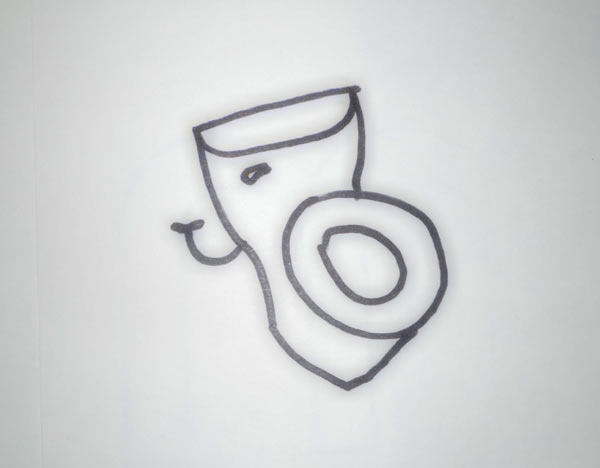
5. Refinements
The tank was moved down to a spot next to the toilet, making installation easier. Toilets that use less water (low-flush toilets) were invented, generally hated, then improved. Some improvements include routing the water flow through secondary paths within the body of the toilet, so that the flush hits the poop with greater force. Some other toilets use two buttons, one for pee, one for poop.
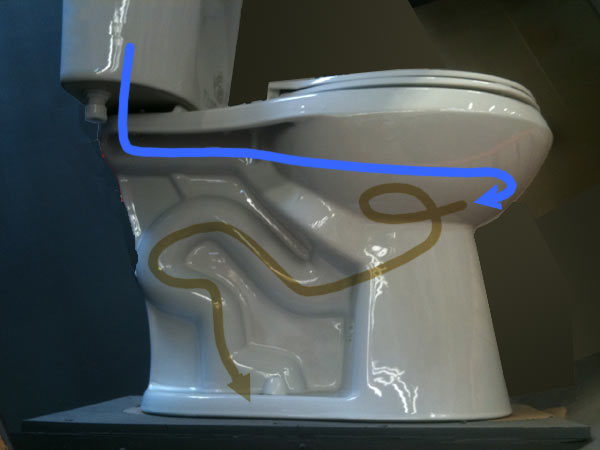
Other innovations include Power assist flush that uses compressed air, and computer-controlled toilet, which allows a wide range of bidet shenanigans, air-drying operations and high-score tabulations.

That's about it. Your made-up toilet history is all caught up to this modern day, October 6, 2012.
I hypothesise that most of this history is accurate. While I didn't formally research any of these steps, it should be clear that I didn't just pull this out of my ass.





